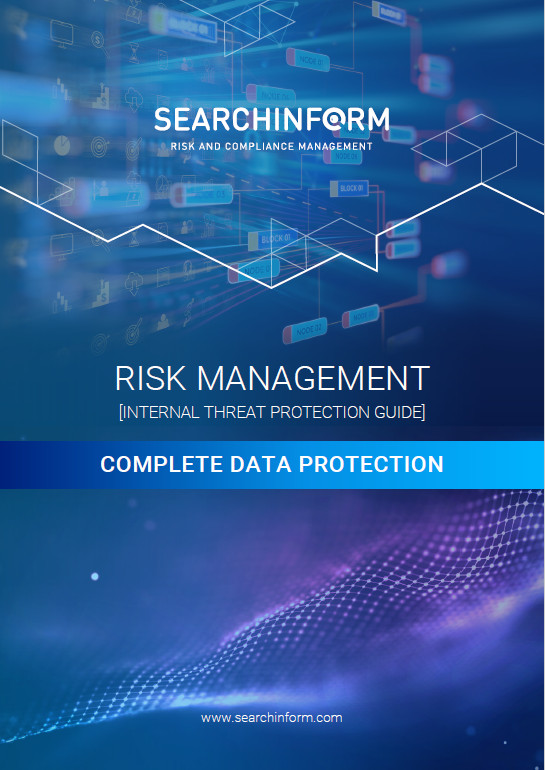Intrusion Prevention System (IPS)
- Introduction to Intrusion Prevention Systems (IPS)
- What Is an IPS?
- How Does an IPs Differ From Other Security Measures?
- Benefits of Implementing IPS
- Functionality of Intrusion Prevention Systems (IPS)
- Traffic Monitoring and Analysis
- Signature-Based Detection
- Anomaly Detection
- Behavioral Analysis
- Real-Time Response and Mitigation
- Integration with Security Ecosystem
- Considerations for IPS Deployment
- Technical Infrastructure Compatibility
- Performance and Throughput Requirements
- Customization and Flexibility
- Integration with Existing Security Infrastructure
- Scalability and Future Growth
- Compliance and Regulatory Requirements
- Training and Personnel Expertise
- Future Trends in IPS Technology
- Integration of Artificial Intelligence and Machine Learning
- Behavioral Analysis and Anomaly Detection
- Cloud Integration and Virtualized Environments
- Zero-Trust Security Frameworks
- Enhanced Threat Intelligence and Collaboration
- Safeguarding Synergy: The Dynamic Duo of SearchInform and IPS
- Advanced Threat Detection
- Comprehensive Visibility and Control
- Streamlined Incident Response
- Regulatory Compliance
- Operational Efficiency
-
-
-
-
-
-
- Understanding Financial Statement Fraud and Cybersecurity
- Combatting Fund Transfer Fraud with Cybersecurity Measures
- Combatting Invoice Fraud: Cybersecurity Strategies for Businesses
- Mobile Payment Fraud: Understanding the Risks and Prevention Strategies
- Online Banking Fraud: How to Stay Protected
- Understanding Payment Card Fraud and How to Prevent It
- Cyber Tax Fraud: Understanding and Preventing It
- Understanding Transaction Fraud in Cybersecurity
-
-
-
-
-
-
-
-
-
-
-
-
- Breach Attacks: Comprehensive Guide
- Cyber Attacks on Banks: Threat Landscape and Countermeasures
- Understanding Cyber Attack Vectors: the Anatomy of Cyber Threats
- Cyber Attacks in Healthcare
- Understanding Cyber Attacks on Critical Infrastructure
- Combatting Government Cyber Attacks: Strategies and Solutions
- State-Backed Cyber Attacks: Insights and Solutions
- Supply Chain Attacks
- Cyber Attack Prevention: Practical Tips and Solutions
- Types of Cyber Attacks: Understanding the Threats
-
-
- A Comprehensive Guide to Access Control Lists (ACLs)
- The Threat of Broken Access Control: How to Protect Your Systems?
- Discretionary Access Control (DAC)
- Understanding the Core Concepts of Mandatory Access Control
- Network Access Control: Key Strategies and Implementation Tips
- Understanding Non-Discretionary Access Control (NDAC)
- Understanding Access Control Policies for Enhanced Security
- Role Based Access Control (RBAC): A Comprehensive Guide
- Rule Based Access Control (RuBAC): A Comprehensive Guide
-
- Biometrics: What Is It and How Does It Work?
- What is Data Access and Why is it Important?
- What is Data Access Control (DAC)?
- What is Federated Identity and Federated Identity Management?
- IAM: Identity and Access Management
- Machine Identity Management
- Microsoft Identity Manager (MIM): A Comprehensive Overview
-
-
-
-
-
-
- Nonpublic Personal Information: What It Is and Why It Matters
- PII Data Classification: Importance, Challenges, and Best Practices
- Personal Information Protection: How to Protect Your Personal Information
- PHI vs PII: A Comparative Analysis of Protected Health Information and Personally Identifiable Information
- Understanding Personally Identifiable Information (PII) Protection
-
-
-
-
-
-
-
-
-
-
-
-
Introduction to Intrusion Prevention Systems (IPS)
In the complex realm of cybersecurity, Intrusion Prevention Systems (IPS) stand as stalwart guardians against digital threats. These systems serve as a crucial component in the defense strategy of networks, detecting and thwarting potential intrusions in real-time. Understanding the significance and functionality of IPS is essential for fortifying digital infrastructures against malicious attacks.
What Is an IPS?
An Intrusion Prevention System (IPS) is a security solution designed to proactively identify and mitigate unauthorized access attempts and malicious activities within a network environment. Unlike traditional firewalls, which primarily monitor and control incoming and outgoing traffic based on predetermined rules, IPS operates with a more dynamic approach. It not only inspects network packets but also analyzes their content, behavior, and context to identify and block potential threats.
At its core, an IPS comprises sophisticated algorithms and signature databases that continuously monitor network traffic patterns for anomalies indicative of malicious activity. When a suspicious event is detected, the IPS can take immediate action, such as blocking the offending IP address, dropping malicious packets, or alerting network administrators for further investigation.
How Does an IPs Differ From Other Security Measures?
In the vast landscape of cybersecurity, various tools and techniques are employed to safeguard digital assets. While firewalls, antivirus software, and intrusion detection systems (IDS) share similarities with IPS, each serves distinct functions within the security ecosystem.
Compared to traditional firewalls, which primarily focus on traffic control based on predefined rules, IPS adds an extra layer of defense by actively inspecting and analyzing packet contents. This proactive approach enables IPS to identify and thwart sophisticated attacks that may evade conventional firewall configurations.
Furthermore, unlike intrusion detection systems (IDS), which solely provide alerts for potential security breaches, IPS possesses the capability to autonomously block or mitigate threats in real-time. By combining detection and prevention capabilities, IPS minimizes the window of vulnerability, reducing the likelihood of successful attacks and mitigating potential damages to the network infrastructure.
In essence, an IPS serves as a dynamic sentinel, leveraging advanced detection mechanisms and proactive intervention to fortify networks against a myriad of cyber threats. Its ability to analyze network traffic in real-time, detect anomalies, and respond swiftly makes it an indispensable asset in the arsenal of modern cybersecurity defenses.
Benefits of Implementing IPS
Implementing an Intrusion Prevention System (IPS) brings a host of invaluable benefits to organizations navigating the ever-evolving landscape of cybersecurity threats. Foremost, IPS enhances the capability of detecting and thwarting potential threats by conducting continuous surveillance of network traffic. Through real-time analysis of packet content, behavior, and context, IPS identifies anomalies indicative of malicious activities. By promptly responding to these threats, IPS significantly reduces the vulnerability window, thereby minimizing the risk of data breaches, system compromises, and service disruptions.
Additionally, IPS plays a pivotal role in ensuring regulatory compliance, a critical concern for organizations across various industries. Compliance with stringent regulations such as GDPR, HIPAA, and PCI DSS is non-negotiable, as non-compliance can lead to severe penalties and legal repercussions. IPS aids in achieving and maintaining compliance by fortifying network security measures, thereby safeguarding sensitive data and ensuring adherence to regulatory mandates.
Despite the initial investment required for IPS deployment, the long-term benefits far outweigh the costs. By proactively preventing security incidents, IPS helps organizations save money and preserve resources that would otherwise be expended on incident response and recovery efforts. Furthermore, the automation of threat detection and response tasks enhances operational efficiency, allowing organizations to reallocate manpower to strategic initiatives aimed at driving business growth and innovation.
In addition to its proactive threat mitigation capabilities, IPS offers protection against advanced and zero-day attacks, which traditional security measures may struggle to detect. Leveraging advanced detection techniques such as behavioral analysis and anomaly detection, IPS provides organizations with a robust defense against emerging cyber threats. Furthermore, IPS enhances visibility and control over network traffic, empowering organizations to enforce security policies effectively and make informed decisions to strengthen their security posture.
Integrating IPS into the cybersecurity framework is essential for organizations seeking to fortify their defenses and maintain resilience against the evolving threat landscape. From enhanced threat detection and regulatory compliance to cost savings and protection against advanced threats, IPS delivers tangible benefits that are indispensable in today's digital age. By investing in IPS, organizations can safeguard their assets, preserve their reputation, and ensure continuity of operations in the face of persistent cyber threats.
Functionality of Intrusion Prevention Systems (IPS)
At the heart of any Intrusion Prevention System (IPS) lies a sophisticated array of functionalities meticulously crafted to detect, analyze, and neutralize potential threats within a network environment. Understanding the intricacies of how IPS operates is paramount in comprehending its role as a frontline defender against cyberattacks.
Traffic Monitoring and Analysis
One of the primary functions of an IPS is to monitor network traffic continuously. It scrutinizes every packet traversing the network, meticulously analyzing its content, behavior, and context. By examining the payload and headers of packets, the IPS can discern patterns indicative of malicious activity, such as known attack signatures or abnormal traffic behavior.
Signature-Based Detection
A cornerstone of IPS functionality is signature-based detection. This technique involves comparing network traffic against a vast database of known attack signatures or patterns. When a match is found, it triggers an immediate response, such as blocking the offending traffic or alerting network administrators. Signature-based detection is effective against well-known threats but may struggle with detecting novel or zero-day attacks.
Anomaly Detection
In addition to signature-based detection, many IPS implementations incorporate anomaly detection mechanisms. These systems establish baselines of normal network behavior and flag deviations from these baselines as potential threats. Anomaly detection is particularly useful for identifying previously unseen attacks or suspicious activities that do not match known signatures.
Behavioral Analysis
Advanced IPS solutions leverage behavioral analysis techniques to identify threats based on the actions and interactions of network entities. By monitoring for deviations from expected behavior, such as sudden spikes in network traffic or unusual access patterns, IPS can detect and mitigate sophisticated attacks designed to evade traditional detection methods.
and perform with SearchInform DLP:
Real-Time Response and Mitigation
Perhaps the most critical aspect of IPS functionality is its ability to respond to threats in real-time. Upon detecting a potential intrusion, the IPS can take immediate action to mitigate the threat, such as blocking malicious traffic, quarantining affected hosts, or dynamically updating firewall rules to prevent further exploitation. This proactive approach minimizes the window of vulnerability, reducing the impact of cyberattacks on the network infrastructure.
Integration with Security Ecosystem
Modern IPS solutions are designed to seamlessly integrate with other components of the security ecosystem, such as firewalls, antivirus software, and Security Information and Event Management (SIEM) systems. By sharing threat intelligence and coordinating responses across multiple security layers, IPS enhances overall security posture and enables a more comprehensive defense against evolving threats.
In essence, the functionality of an Intrusion Prevention System extends far beyond mere traffic inspection. It encompasses a multifaceted approach to threat detection and mitigation, leveraging a combination of signature-based detection, anomaly detection, behavioral analysis, and real-time response mechanisms to safeguard network assets from a diverse array of cyber threats.
Considerations for IPS Deployment
When contemplating the deployment of an Intrusion Prevention System (IPS), organizations must carefully weigh several critical considerations to ensure its effectiveness and seamless integration within their existing cybersecurity infrastructure. From technical requirements to organizational needs, navigating these considerations is essential for maximizing the benefits of IPS deployment while mitigating potential challenges.
Technical Infrastructure Compatibility
Before embarking on IPS deployment, organizations must assess the compatibility of the chosen IPS solution with their existing technical infrastructure. This includes evaluating factors such as network topology, bandwidth requirements, and scalability. Ensuring that the IPS seamlessly integrates with routers, switches, firewalls, and other network devices is paramount to avoid disruptions and optimize performance.
Considering the diverse nature of modern network environments, compatibility with both physical and virtualized infrastructure is crucial. IPS solutions should be capable of operating in hybrid cloud environments and supporting technologies such as Software-Defined Networking (SDN) to accommodate evolving infrastructure trends.
Performance and Throughput Requirements
Another crucial consideration is assessing the performance and throughput requirements of the IPS solution in relation to the organization's network environment. High-speed networks may necessitate IPS solutions capable of handling large volumes of traffic without introducing latency or bottlenecks. Conducting thorough performance testing and benchmarking prior to deployment is essential to validate the IPS's ability to meet the organization's requirements.
Scalability is also a key factor in ensuring long-term performance adequacy. IPS solutions should be capable of scaling horizontally to accommodate increases in network traffic and vertically to support additional features and functionality as the organization grows.
Customization and Flexibility
Every organization has unique security requirements and operational preferences. Therefore, the ability to customize and configure the IPS solution to align with these specific needs is paramount. From defining security policies and rule sets to fine-tuning detection thresholds and response actions, organizations must ensure that the IPS offers sufficient flexibility and granularity to adapt to evolving threats and operational requirements.
Additionally, IPS solutions should support the creation of custom signatures and rules tailored to the organization's environment and threat landscape. This flexibility empowers organizations to address specific security concerns and compliance mandates effectively.
Integration with Existing Security Infrastructure
Effective cybersecurity relies on a layered defense strategy, with various security tools and technologies working in concert to mitigate risks. Therefore, seamless integration with existing security infrastructure, such as firewalls, antivirus software, and Security Information and Event Management (SIEM) systems, is essential. Interoperability between the IPS and other security solutions enables centralized management, streamlined threat detection, and coordinated incident response.
Integration capabilities extend beyond technical interoperability to include compatibility with industry-standard protocols and APIs for data exchange and orchestration. This ensures that the IPS can communicate effectively with other security tools and platforms, facilitating automated responses and threat intelligence sharing.

Scalability and Future Growth
As organizations evolve and expand, their cybersecurity needs will inevitably evolve as well. Thus, scalability is a crucial consideration when deploying an IPS. Organizations must assess whether the chosen IPS solution can accommodate future growth in network traffic, devices, and users without requiring significant upgrades or replacements. Scalability ensures that the IPS remains effective and cost-efficient in the long term.
Scalability encompasses not only the capacity to handle increased workload but also the ability to adapt to emerging threats and evolving attack vectors. IPS solutions should feature robust threat intelligence capabilities and support regular updates to ensure efficacy against the latest cyber threats.
Compliance and Regulatory Requirements
Compliance with industry regulations and data protection laws is a fundamental obligation for organizations across various sectors. When deploying an IPS, organizations must ensure that the chosen solution meets the compliance requirements relevant to their industry and geographic location. This includes considerations such as data encryption, logging, auditing, and reporting capabilities mandated by regulatory frameworks such as GDPR, HIPAA, and PCI DSS.
IPS solutions should provide features and functionality specifically designed to address compliance requirements, such as the ability to generate detailed audit logs, demonstrate policy enforcement, and facilitate incident response reporting. Compliance certifications and attestations from reputable third-party organizations can also provide assurance of the IPS solution's compliance capabilities.
Training and Personnel Expertise
Deploying an IPS requires not only robust technology but also skilled personnel capable of configuring, monitoring, and maintaining the system effectively. Organizations must invest in training and development programs to ensure that their cybersecurity teams possess the necessary expertise to leverage the full capabilities of the IPS solution. Additionally, establishing clear roles and responsibilities for IPS management and incident response is essential for ensuring accountability and operational efficiency.
Training programs should cover various aspects of IPS deployment and operation, including policy configuration, threat analysis, incident handling, and performance optimization. Hands-on exercises and simulations can provide valuable practical experience, allowing cybersecurity professionals to familiarize themselves with the IPS solution and develop proficiency in managing security incidents effectively.
The deployment of an Intrusion Prevention System (IPS) entails a myriad of considerations spanning technical, operational, and regulatory domains. By carefully evaluating factors such as technical infrastructure compatibility, performance requirements, customization flexibility, integration capabilities, scalability, compliance obligations, and personnel expertise, organizations can ensure successful IPS deployment and enhance their overall cybersecurity posture. With diligent planning and strategic decision-making, IPS deployment can serve as a cornerstone of a robust cybersecurity strategy, enabling organizations to proactively mitigate cyber threats and protect their critical assets effectively.
Future Trends in IPS Technology
As cybersecurity threats continue to evolve in complexity and sophistication, the landscape of Intrusion Prevention Systems (IPS) technology is poised for significant advancements. Anticipating future trends in IPS technology is essential for organizations seeking to stay ahead of emerging threats and maintain robust defense postures. From artificial intelligence (AI) to cloud integration, several key trends are expected to shape the future of IPS technology.
Integration of Artificial Intelligence and Machine Learning
One of the most promising trends in IPS technology is the integration of artificial intelligence (AI) and machine learning (ML) algorithms. By leveraging AI and ML capabilities, IPS solutions can enhance their threat detection capabilities and adapt dynamically to evolving cyber threats. These advanced algorithms can analyze vast amounts of network data in real-time, identifying patterns and anomalies indicative of malicious activity with unprecedented speed and accuracy.
AI-powered IPS systems can learn from past incidents and continuously improve their detection algorithms, thereby staying ahead of emerging threats. By automating threat detection and response tasks, AI-driven IPS solutions enable organizations to augment their cybersecurity defenses and mitigate risks more effectively.
Behavioral Analysis and Anomaly Detection
In addition to signature-based detection, future IPS technology is expected to place greater emphasis on behavioral analysis and anomaly detection techniques. Traditional signature-based approaches are effective against known threats but may struggle to detect novel or zero-day attacks. Behavioral analysis, on the other hand, focuses on identifying deviations from normal network behavior, allowing IPS solutions to detect previously unseen threats and suspicious activities.
By analyzing traffic patterns, user behavior, and application interactions, IPS systems can identify anomalies indicative of potential security breaches. This proactive approach enables organizations to detect and mitigate threats before they can inflict damage, thereby reducing the risk of data breaches and system compromises.
Cloud Integration and Virtualized Environments
With the widespread adoption of cloud computing and virtualized environments, future IPS technology is expected to prioritize seamless integration with cloud platforms and virtualized infrastructure. Cloud-based IPS solutions offer scalability, flexibility, and centralized management capabilities, making them well-suited for dynamic and distributed network environments.
As organizations transition towards hybrid and multi-cloud architectures, IPS solutions must be capable of providing consistent security across on-premises and cloud-based deployments. This requires IPS solutions to support integration with cloud-native security tools and services, enabling organizations to extend their security posture seamlessly into the cloud.
Zero-Trust Security Frameworks
Another emerging trend in IPS technology is the adoption of zero-trust security frameworks. Traditional perimeter-based security models are no longer sufficient in today's interconnected and perimeter-less networks. Zero-trust security principles advocate for the principle of "never trust, always verify," whereby every user, device, and application is treated as untrusted until proven otherwise.
IPS solutions play a crucial role in enforcing zero-trust policies by inspecting and controlling traffic flows within the network, regardless of its source or destination. By implementing granular access controls, micro-segmentation, and continuous monitoring, IPS solutions can help organizations enforce zero-trust principles and mitigate the risk of insider threats and lateral movement within the network.
Enhanced Threat Intelligence and Collaboration
Future IPS technology is expected to leverage enhanced threat intelligence and collaboration capabilities to stay ahead of emerging threats. By aggregating and correlating threat intelligence from various sources, including global threat feeds, industry consortiums, and community-driven initiatives, IPS solutions can enrich their detection capabilities and provide organizations with comprehensive visibility into emerging threats.
IPS solutions may facilitate collaboration and information sharing among organizations, enabling them to collectively defend against common threats and vulnerabilities. By participating in threat intelligence sharing platforms and industry alliances, organizations can enhance their cybersecurity posture and benefit from collective insights and expertise.
The future of IPS technology is characterized by advancements in artificial intelligence, behavioral analysis, cloud integration, zero-trust security, and threat intelligence collaboration. By embracing these trends, organizations can enhance their cybersecurity defenses, adapt to evolving threats, and maintain robust security postures in an increasingly complex and dynamic threat landscape. As IPS technology continues to evolve, organizations must stay vigilant, embrace innovation, and invest in solutions that enable them to effectively mitigate cyber risks and protect their critical assets.
Safeguarding Synergy: The Dynamic Duo of SearchInform and IPS
The integration of SearchInform solutions with Intrusion Prevention Systems (IPS) offers organizations a comprehensive approach to cybersecurity, combining advanced data protection and threat detection capabilities. This integration provides numerous benefits that enhance the overall security posture and operational efficiency of organizations.
Advanced Threat Detection
By integrating SearchInform solutions with IPS, organizations gain access to advanced threat detection capabilities that extend beyond traditional signature-based methods. SearchInform's advanced data loss prevention (DLP) and insider threat detection capabilities complement the intrusion detection capabilities of IPS, enabling organizations to identify and mitigate a wide range of cyber threats effectively. This synergy enhances the organization's ability to detect both external attacks and insider threats, safeguarding sensitive data and intellectual property from unauthorized access and exfiltration.
Comprehensive Visibility and Control
The integration of SearchInform solutions with IPS enhances visibility and control over network activities, providing organizations with real-time insights into user behavior, data movements, and network traffic. By correlating data from SearchInform's DLP solutions with IPS alerts and events, organizations can gain a holistic view of security incidents and potential threats. This comprehensive visibility enables organizations to respond promptly to security incidents, enforce security policies, and mitigate risks effectively, thereby enhancing overall security posture.
Streamlined Incident Response
Effective incident response is critical for mitigating the impact of security breaches and minimizing downtime. By integrating SearchInform solutions with IPS, organizations can streamline incident response processes and improve response times. SearchInform's DLP solutions provide contextual information about security incidents, such as the type of data involved, the user responsible, and the actions taken. This information can be correlated with IPS alerts to prioritize and respond to incidents based on their severity and impact on the organization's operations.
Regulatory Compliance
Regulatory compliance is a significant concern for organizations across various industries, with stringent requirements regarding data protection and privacy. By integrating SearchInform solutions with IPS, organizations can enhance their ability to comply with regulatory mandates such as GDPR, HIPAA, PCI DSS, and others. SearchInform's DLP solutions help organizations identify and protect sensitive data, while IPS ensures that data is securely transmitted and accessed according to compliance requirements. This integration simplifies compliance efforts by providing organizations with the tools and capabilities needed to demonstrate adherence to regulatory standards.
Operational Efficiency
The integration of SearchInform solutions with IPS enhances operational efficiency by automating security processes and reducing manual intervention. By leveraging machine learning and AI-driven analytics, SearchInform's DLP solutions can identify and classify sensitive data automatically, reducing the burden on IT and security teams. Similarly, IPS automates threat detection and response tasks, enabling organizations to detect and mitigate security threats in real-time without human intervention. This automation improves operational efficiency, allowing organizations to focus on strategic initiatives rather than routine security tasks.
Integration of SearchInform solutions with IPS offers organizations a powerful combination of advanced threat detection, comprehensive visibility and control, streamlined incident response, regulatory compliance, and operational efficiency. By leveraging the synergies between these solutions, organizations can enhance their cybersecurity posture, protect sensitive data, and mitigate a wide range of cyber threats effectively.
Full-featured software with no restrictions
on users or functionality
Company news
SearchInform uses four types of cookies as described below. You can decide which categories of cookies you wish to accept to improve your experience on our website. To learn more about the cookies we use on our site, please read our Cookie Policy.
Necessary Cookies
Always active. These cookies are essential to our website working effectively.
Cookies does not collect personal information. You can disable the cookie files
record
on the Internet Settings tab in your browser.
Functional Cookies
These cookies allow SearchInform to provide enhanced functionality and personalization, such as remembering the language you choose to interact with the website.
Performance Cookies
These cookies enable SearchInform to understand what information is the most valuable to you, so we can improve our services and website.
Third-party Cookies
These cookies are created by other resources to allow our website to embed content from other websites, for example, images, ads, and text.
Please enable Functional Cookies
You have disabled the Functional Cookies.
To complete the form and get in touch with us, you need to enable Functional Cookies.
Otherwise the form cannot be sent to us.

Subscribe to our newsletter and receive a bright and useful tutorial Explaining Information Security in 4 steps!

Subscribe to our newsletter and receive case studies in comics!







